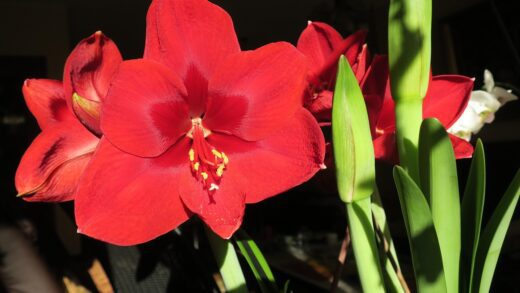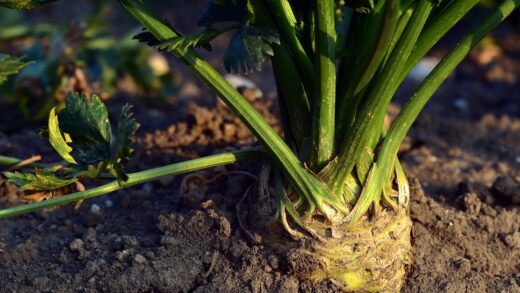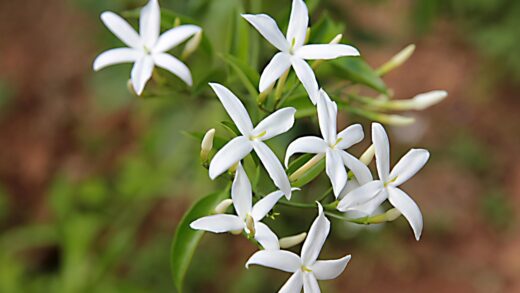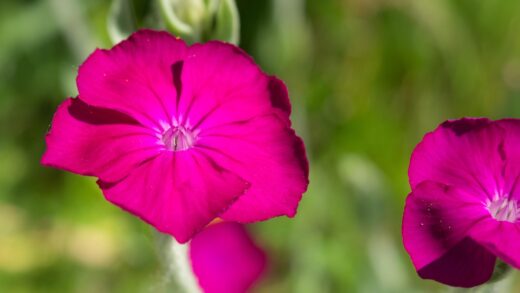The Chinese juniper is a relatively low-maintenance plant that exhibits a remarkable adaptability to a wide range of soil conditions, generally thriving without an aggressive fertilization schedule. Unlike many other landscape plants that require regular feeding to perform well, junipers have modest nutrient requirements and are efficient at extracting what they need from average garden soil. Understanding this inherent thriftiness is key to proper nutritional management; over-fertilization is a more common and damaging mistake than under-fertilization. A targeted and conservative approach to providing supplemental nutrients, applied only when necessary, will support healthy, sustainable growth without promoting the weak, succulent foliage that can attract pests and suffer from winter damage. The primary goal of any fertilization program for Chinese junipers should be to correct specific deficiencies and support establishment, rather than to force rapid growth.
In most landscape settings, a healthy Chinese juniper can obtain all the essential nutrients it needs directly from the soil. The natural decomposition of organic matter, such as fallen leaves and decaying mulch, creates a slow and steady supply of nitrogen, phosphorus, potassium, and various micronutrients. For this reason, established junipers growing in moderately fertile soil may never require the application of synthetic fertilizers. The first step in determining if fertilization is needed is to observe the plant’s health. A juniper with good color, dense foliage, and steady annual growth is likely receiving adequate nutrition from its environment and does not need supplemental feeding.
Before considering any fertilizer application, it is highly beneficial to conduct a professional soil test. A soil test provides a detailed and accurate analysis of the soil’s pH and the levels of essential nutrients currently available. This information moves beyond guesswork and allows for a precise, targeted approach to fertilization. For example, the test might reveal that the soil is sufficient in all nutrients except for nitrogen, or that the pH is too high, locking up the availability of iron. Without this data, applying a balanced fertilizer could add excess phosphorus or potassium to the soil, which can be environmentally harmful and may interfere with the uptake of other crucial micronutrients.
If a soil test is not feasible, a visual assessment of the plant can offer clues about potential nutrient deficiencies. The most common symptom is chlorosis, or the yellowing of foliage, which can indicate a lack of nitrogen. Uniformly pale green or yellow needles, especially on older, inner parts of the plant, often point to a nitrogen deficiency. Yellowing that appears specifically on the new growth at the tips of the branches might suggest an iron deficiency, which is common in high-pH (alkaline) soils. However, it is important to remember that discoloration can also be caused by other factors, such as poor drainage, soil compaction, or disease, so a comprehensive diagnosis is essential before applying fertilizer.
Choosing the right fertilizer
When fertilization is deemed necessary for a Chinese juniper, selecting the appropriate type of fertilizer is crucial. A balanced, slow-release granular fertilizer is generally the best choice for established landscape plants. These fertilizers are designed to release nutrients gradually over an extended period, providing a steady supply that mimics natural processes and reduces the risk of burning the roots or causing a sudden, weak flush of growth. Look for a product with a balanced N-P-K (Nitrogen-Phosphorus-Potassium) ratio, such as 10-10-10, or a formulation designed specifically for trees and shrubs, which might have a ratio like 12-4-8.
More articles on this topic
For correcting specific deficiencies identified by a soil test, a more targeted fertilizer product may be more appropriate than a general-purpose balanced one. For instance, if only nitrogen is lacking, a fertilizer high in nitrogen, such as blood meal (organic) or ammonium sulfate, could be used. If an iron deficiency is diagnosed in alkaline soil, a standard iron supplement may not be effective because the high pH will keep it in a form unavailable to the plant. In this case, chelated iron is the recommended solution, as the chelation process protects the iron molecule and keeps it available for root uptake even in high-pH conditions.
Organic fertilizers and soil amendments are excellent choices for the long-term nutritional health of Chinese junipers. Materials like compost, well-rotted manure, and composted pine bark work primarily by improving the soil structure and enhancing its biological activity. As these materials decompose, they release a wide range of macro- and micronutrients slowly and gently, conditioning the soil and creating a healthy environment for the root system. Incorporating a layer of compost into the soil at planting time and using organic materials as a top-dressing or mulch are sustainable ways to provide a continuous, low-level supply of nutrients without the risks associated with synthetic fertilizers.
Water-soluble fertilizers, often marketed as “plant food” that is mixed with water and applied during irrigation, are generally not recommended for established, in-ground Chinese junipers. While they provide a quick boost of nutrients, this rapid availability can stimulate a flush of weak, succulent growth that is more susceptible to damage from pests, diseases, and frost. These products are better suited for container-grown plants where nutrients leach out more quickly, or for providing a rapid correction for a severe, diagnosed deficiency. For landscape junipers, the slow and steady approach is almost always superior for promoting strong, resilient growth.
Application techniques and timing
The timing of fertilizer application is a critical factor in ensuring the nutrients are used effectively by the plant. The optimal time to fertilize Chinese junipers is either in late fall or early spring. A late fall application, after the first hard frost has signaled the plant to enter dormancy, allows the nutrients to be absorbed by the soil and available to the roots for early spring growth. An early spring application, just as the ground thaws and before new growth begins, also provides nutrients at the start of the active growing season when demand is highest. Fertilizing during these windows supports healthy development and minimizes the risk of stimulating vulnerable late-season growth.
More articles on this topic
It is particularly important to avoid fertilizing Chinese junipers in the late summer or early fall. Applying nitrogen-rich fertilizer during this period can trigger a new flush of tender growth. This new foliage will not have sufficient time to mature and “harden off” before the arrival of freezing temperatures in winter. As a result, this late growth is highly susceptible to frost damage and winter kill, which can detract from the plant’s appearance and create entry points for disease-causing pathogens. The plant should be winding down its growth and preparing for dormancy during this time, not being stimulated to produce new shoots.
When applying a granular fertilizer, proper technique is essential to ensure even distribution and prevent damage to the plant. The fertilizer should be broadcast evenly over the entire root zone, which extends from the base of the trunk out to the dripline (the furthest reach of the branches) and often slightly beyond. Avoid concentrating the fertilizer in a single band or piling it directly against the trunk, as this can severely burn the roots and the bark tissue. A handheld or push-type broadcast spreader can be used for larger areas to achieve a uniform application.
After the granular fertilizer has been applied to the soil surface, it must be watered in thoroughly. This watering serves two important purposes: it activates the slow-release mechanism of the fertilizer and it helps to transport the nutrients down through the soil profile to the root zone where they can be absorbed. Without adequate watering, the fertilizer granules can remain on the surface, where they are ineffective and can potentially be washed away by heavy rain. Watering also ensures that the fertilizer salts are diluted, preventing them from accumulating at the surface and burning any foliage they may have come into contact with during application.
Organic fertilization options
For those preferring a more natural and sustainable approach, organic options provide an excellent way to meet the nutritional needs of Chinese junipers while simultaneously improving soil health. Top-dressing with high-quality, mature compost is one of the most beneficial practices. Applying a one- to two-inch layer of compost over the root zone annually in the spring acts as a very slow-release fertilizer, providing a broad spectrum of essential nutrients and micronutrients as it is broken down by soil microbes. Compost also adds valuable organic matter to the soil, which improves its structure, water-holding capacity, and drainage.
Using organic materials as mulch provides a dual benefit of both covering the soil and slowly fertilizing the plant. Mulches such as shredded bark, wood chips, pine straw, or composted leaves gradually decompose at the soil surface. This decomposition process releases a steady, low-level supply of nutrients that are carried down to the root zone with each rainfall or irrigation event. This mimics the natural nutrient cycling that occurs in a forest ecosystem and is a very gentle and effective way to feed a Chinese juniper over the long term without any risk of over-fertilization.
For a more targeted nutrient boost from an organic source, various meal-based fertilizers can be used. For example, blood meal is a potent source of organic nitrogen, while bone meal is an excellent source of phosphorus and calcium. These can be beneficial if a soil test indicates a deficiency in one of these specific nutrients. When using these products, it is still important to follow the application rate instructions on the packaging, as even organic fertilizers can be over-applied. These amendments should be lightly incorporated into the top layer of soil and watered in to begin the process of microbial breakdown that makes their nutrients available to the plant.
Compost tea is another organic fertilization method that can be beneficial, particularly for providing a quick dose of nutrients and beneficial microbes to the soil. Compost tea is made by steeping mature compost in aerated water for a period of time, which extracts soluble nutrients and cultivates a rich population of beneficial bacteria and fungi. The resulting liquid can be used as a soil drench applied over the root zone of the juniper. This application not only provides a gentle nutrient feed but also inoculates the soil with beneficial microorganisms that can improve nutrient cycling and help suppress soil-borne diseases.
Correcting nutrient deficiencies
When a nutrient deficiency is suspected, the first and most critical step is to confirm the diagnosis, ideally with a soil test or, if necessary, a plant tissue analysis. Applying the wrong nutrient or simply adding a balanced fertilizer without knowing the specific problem can be ineffective or even make the situation worse. For example, if the issue is iron chlorosis caused by high soil pH, adding more iron to the soil will not help if the pH is not also addressed. The high pH is the root cause, as it makes the iron chemically unavailable to the plant.
For a confirmed nitrogen deficiency, characterized by uniform yellowing of the foliage, a timely application of a nitrogen-rich fertilizer is warranted. This can be addressed in the spring with a balanced slow-release fertilizer or a more targeted organic source like blood meal or a synthetic source like ammonium sulfate. The application should follow the recommended rates, and the plant’s response should be monitored over the following weeks and months. It is important not to over-apply nitrogen in an attempt to get a quick green-up, as this can lead to weak growth and other long-term problems.
Correcting an iron deficiency, which typically appears as yellowing on the newest growth while older needles remain green, requires a more specific approach. This issue, known as iron chlorosis, is common in alkaline soils (pH above 7.0). The most effective short-term solution is to apply chelated iron, either as a soil drench or a foliar spray. The chelation protects the iron from being locked up by the high-pH soil. For a long-term solution, efforts should be made to gradually lower the soil pH by incorporating acidifying amendments like elemental sulfur, sphagnum peat moss, or using fertilizers with an acidifying effect, such as those containing ammonium sulfate.
In some cases, a perceived nutrient deficiency may actually be a secondary symptom of a different underlying problem. Root damage from overwatering, poor drainage, soil compaction, or disease can all impair the root system’s ability to absorb nutrients, even if they are plentiful in the soil. Similarly, a severe pest infestation can cause stippling and yellowing of foliage that can be mistaken for a nutritional issue. Therefore, it is essential to conduct a thorough examination of the plant’s growing conditions and overall health to ensure that the true root cause of the symptoms is being addressed, rather than just treating a symptom with fertilizer.


















